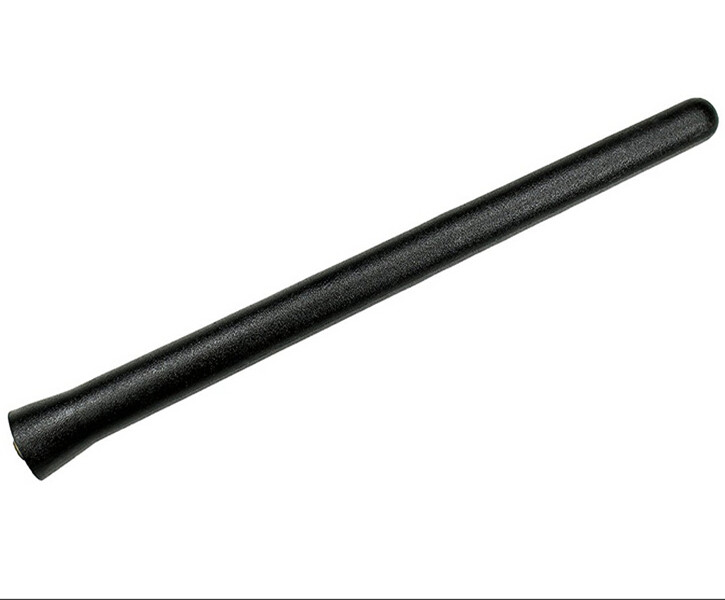ISDB-T digital TV system
The digital terrestrial broadcasting (DTTB) format determined by Japan is ISDB-T (Integrated Services Digital Broadcasting-Terrestrial Transmission)
1. The overall situation of ISDB-T The terrestrial transmission system adopted in Japan is not limited to the transmission of digital TV (picture and sound) alone, but also includes independent sound and data broadcasting. These can exist alone or in any combination, forming a 6MHz bandwidth One channel program or multiple channels program within. The ISDB-T system includes a sending part and a receiving part. The input of the sending part is the output of the source code, and the output is the intermediate frequency modulation signal added to the input end of the transmitter. It is converted into a radio frequency signal in the transmitter and goes to the feeder after the power amplifier. And antenna.
ISDB-T's source coding, the MEPG-2SDTV image for the image is 720 (704) × 480, and the sample is in 4: 2: 0 mode. The source coding of the sound signal does not use MUSICAM (masked universal subband integrated coding and multiplexing) and DolbyAC-3, but uses the AAC compression method based on MEPG-4.
The receiving part of the ISDB-T system: the input signal is a COFDM modulated radio frequency signal, and the output signal is a channel decoded signal decoded to the source.
ISDB-T sending and receiving block diagram

TMCC configures control information for transmission and multiplexing.
2. ISDB-T transmission bandwidth
In order to adapt to the original channel plan of terrestrial television broadcasting (6MHz per channel), the transmission bandwidth of each channel in ISDB-T is (432kHz × 13 + 4kHz) = 5.62MHz or (432kHz × 13 + 1kHz) = 5.617MHz. Here, each 432kHz is used as an independent OFDM (orthogonal frequency division multiplexing) frequency band, and 13 OFDM can be contained within 6MHz. Each OFDM segment is composed of a data segment and a pilot signal, or OFDM segment refers to the information data stream transmitted in the 432kHz bandwidth after adding various pilot signals to the data segment. Each data segment can independently specify its carrier modulation method (16QAM, 64QAM, QPSK or DQPSK), inner code coding efficiency (1/2, 2/3, 3/4, 5/6, or 7/8), protection Interval ratio and time interleaving depth etc.
Each channel of European DVB-T 8MHz or 7MHz is treated as a whole, and the modulation method for all carriers can only be one (16QAM, 64QAM or QPSK), and the internal code encoding efficiency can only be selected to use one (1 / 2, 2/3, 3/4, 5/6, or 7/8), the guard interval ratio can only be one (1/4, 1/8, 1/16, or 1/32).
In these respects, the signal processing of ISDB-T is basically the same as that of DVB-T, but it is more flexible, and the relevant parameters can be optimized according to the different needs of TV, sound, and data.
3 Transmission signal form
ISDB-T implements multiplexing of transmission signals according to the MEPG-2 system. Each physical channel (6 MHz) is a TS stream. 13 OFDM segments can form a large block with uniform parameters, or can be divided into several block layers with different parameters, up to 4 block layers.
During reception, the entire 13-segment OFDM can be received, or only the central OFDM in the 13-segment OFDM can be received. The following figure shows the two cases of non-blocking layer overall reception and block-layer partial reception.
The number of OFDM segments included in a block layer is not limited, and it can be more or less (<13), and part of the reception always receives the central segment, that is, only receives a part of the TS stream in a physical channel (6MHz).
ISDB-T overall reception and partial reception

4 ISDB-T system transmission parameters
The bandwidth of each OFDM segment of ISDB-T is 432kHz, the internal carrier interval is 4kHz and 1kHz, and the number of carriers is 108 and 432 respectively. In order to resist multipath interference at the receiving end, each effective symbol duration Tu (= 1 / Carrier interval), a guard interval duration △ is added, and there are 4 values ​​(1/4, 1/8, 1/16, or 1/32) according to the specified value of △ / Tu.
Some transmission parameters within 6MHz of the entire ISDB-T physical channel are listed in the following table:

FM AM Antenna Description
With this high-quality short rod aerial with sport design you have the possibility to replace the old one.
The aerial has a compact design and small length. Due to the design, this antenna is a convenient option for a fast conversion.
The high quality offers good reception and is perfect for a variety of vehicle models.
FM AM Antenna Technical Data:
✔ Length: around 6,29 inches/ 16 cm
✔ Length with external thread: 6,49 inches/16,5 cm
✔ Color: Black
✔ Band: FM/AM
✔ Thread type: M6
✔ Material of the external thread: Rubber mast
✔ Supports GPS/GSM/Navi
✔ 16V

FM AM Antenna Compatible with the following vehicles
Alfa Romeo, Audi, BMW, Citroen, Chevrolet, Daewoo, Dacia, Daihatsu, Ford, Fiat, Honda, Hyundai, Isuzu, Jeep, Kia, Lancia, Land Rover, Mazda, Mercedes, Mitsubishi, Nissan, Opel, Peugeot, Renault, Rover, Saab, Seat (NOT COMPATIBLE WITH SEAT LEON BJ 2009), Skoda, Subaru, Suzuki, Toyota, Volkswagen (VW), Volvo
Delivery Content:
1 x Short rod Aerial with external thread M6 (Black)
Adapter-Universe is a since 10 years existing German brand of the company Tradefox Ltd., that deals with high-class adapter and automotive radio accessories. . By choosing us you gain a flexible and qualified partner for making the best out of your future plans.
FM AM Antenna
FM AM Antenna,Car FM AM Antenna,AM Car outdoor Antenna FM,Telescopic FM Radio Antenna
Shenzhen Yetnorson Technology Co., Ltd. , http://www.yetnorson.com